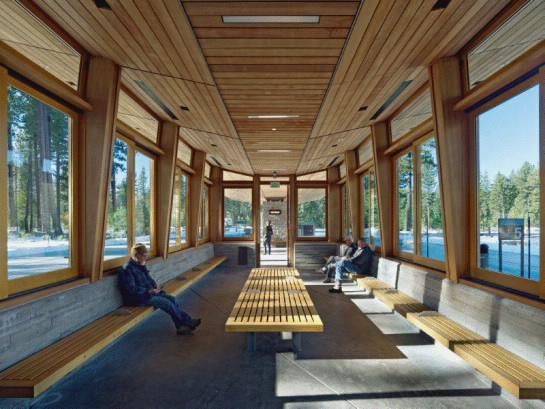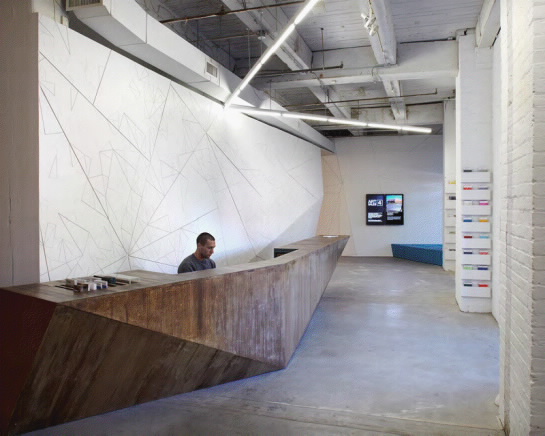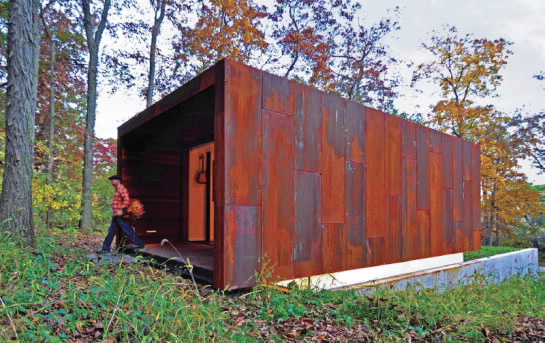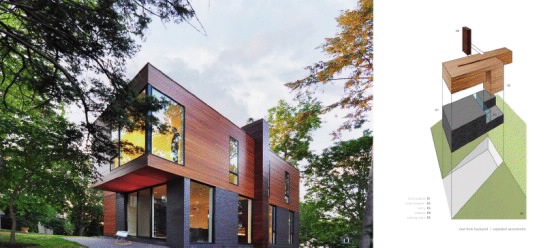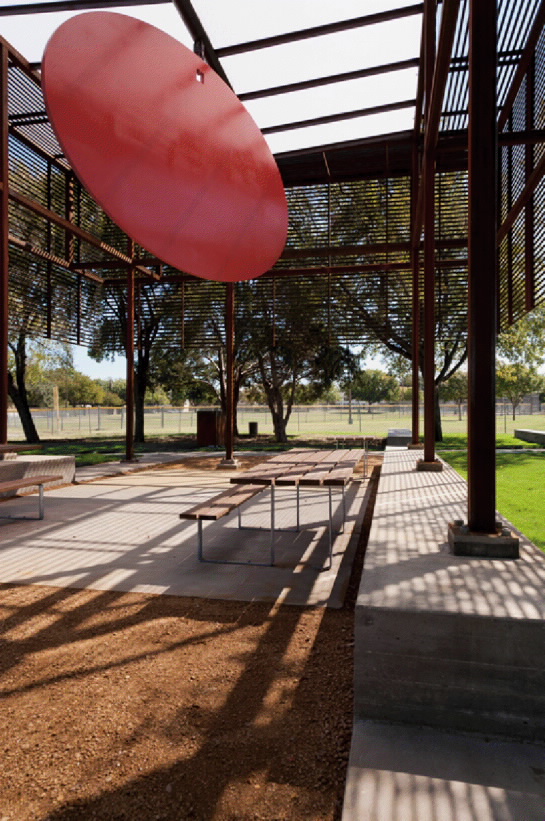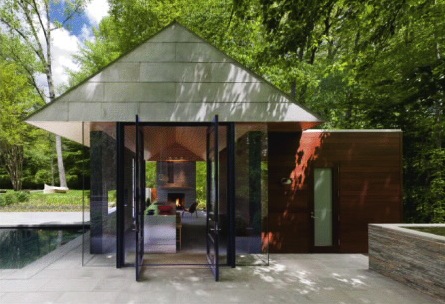Washington, D.C. – April 10, 2013 – The American Institute of Architects (AIA) has selected the ten recipients of the 2013 Small Project Awards. The AIA Small Project Awards Program, now in its tenth year, was established to recognize small-project practitioners for the high quality of their work and to promote excellence in small-project design. This award program emphasizes the excellence of small-project design and strives to raise public awareness of the value and design excellence that architects bring to projects, no matter the limits of size and scope.
The jury for the Small Project Awards includes: Leonard Kady, AIA, (jury chair) Leonard Kady Architecture + Design; Julie Beckman, KBAS; Christopher Herr, AIA, Studio H:T; Laura Kraft, AIA, Laura Kraft Architect; and Rob Yagid, Fine Homebuilding Magazine.
Award recipients are categorized into four groups:
Category 1: A small project construction, object, work of environmental art or architectural design element up to $150,000.
Category 2: A small project construction, up to $1,500,000.
Category 3: A small project construction, object, work of environmental art, or architectural design less than 5,000-square-foot constructed by the architect. The architect must have had a significant role in the construction, fabrication and/or installation of the work, in addition to being the designer.
Category 4: Unbuilt architectural designs less than 5,000-square-foot for which there is no current intent to build, of all project types including purely theoretical, visionary projects, with or without a client.
You can get more information and see additional images of the projects by following the links below.
Category 1: Project up to $150,000
Bemis Info Shop; Omaha
Min | Day
More than a new entry and reception area for a contemporary art center, the InfoShop is a social condenser and transition space between the city and the galleries. It is an open social space for spontaneous meetings, dialog and debate. A 24’-long reception desk can be transformed into a full bar with a plug that fills the work area. Opposite are banks of simple boxes for publications and leaflets that extend the modules of the existing brick wall. The paneled the wall with custom, CNC-milled panels derived from a pinwheel aperiodic tiling pattern. The pattern is composed of right triangles with infinite variation in scale and orientation but no periodicity.
Cemetery Marker; South Canaan, PA
Kariouk Associates
Before dying, a woman left a note for her children to be read after her death and her sole request was that her gravesite becomes a garden. The tops of her marker are inscribed with a stanza from Audre Lorde’s poem “Prologue”, reading“…The children remain like blades of grass over the earth and all the children are singing louder than mourning…And the grasses will still be singing.” The five cast bronze plates of this marker spread over the site at varied heights above the earth, spaced to permit the grass to grow between. As the plates age, they oxidize and blend into the landscape.
Studio for a Composer; Spring Prairie, WI
Johnsen Schmaling Architects
This intimate retreat serves as a studio for a Country Western musician to write his work and reconnect with nature. A concrete plinth, carved into the sloped site, provides storage space and supports a linear studio volume whose long sides are covered with a weathering steel shroud. Glazed openings at each end of the studio frame views into the landscape, providing access into the space and onto the green roof of the concrete plinth. The clerestory provides natural light for the storage space below; at night, it emits its soft glow into the dark countryside. The carefully detailed steel envelope turns the building skin into an ever-changing canvas.
Category 2: Project up to $1.5 million
Nexus House; Madison, WI
Johnsen Schmaling Architects
The house is composed of two principal building blocks: a two-story brick podium partially embedded in the sloping site; and a linear cedar-clad meander that wraps up and over the podium before transforming into a cantilever, its overhang providing shade for the patio below. Steps lead up the slope to the front door, a glazed recess with a delicate steel canopy marking the vertical joint between the two building blocks. The door opens into a vestibule that leads into the main living hall, an open space whose neutral material palette is complemented by a troika of dark-stained wood objects spatially anchoring the open space: an entertainment center; a fireplace and chimney; and a wood canopy cradling an intimate side lounge, which can be closed off to transform into a guest bedroom or quiet study.
Pavilion at Cotillion Park; Dallas
Mell Lawrence Architects
The composition of steel components abstracts and mimics the surrounding trees to produce similar dappled shade. The sun’s movement animates the structure, catching direct light, casting shadows and patterns, and creating dynamic figure-ground shapes against the sky. Long concrete benches not only define the outdoor room under the translucent roof, but stretch out beyond to extend the usable area into and under the surrounding shade trees. Over time the raw steel will oxidize and the fly-ash concrete will weather like natural stone. The solid polycarbonate roof blocks the rain and UV rays. Suspended at the center of the pavilion hangs a bright red/orange elliptical mobile/weathervane which gently rotates to acknowledge any changing wind direction.
Webb Chapel Park Pavilion; Mission, TX
Cooper Joseph Studio
The site plan creates a shaded area for both a playground, and a soccer field. All surfaces are highly durable, fireproof and maintenance free. The reduced palette of board-formed concrete and plaster allows for the most effective play of shade and shadow. There is an element of surprise with the bright yellow, pyramidal shapes inside the rectangular concrete shell. The ceiling’s primary purpose is to act as a natural ventilation system, just as a traditional “palapa”, allowing hot air to rise. Convection breezes are increased as seating is embedded in the earth, keeping the concrete cooled.
Category 3: Project constructed by the architect, less than 5,000 sf

308 Mulberry; Lewes, DE
Robert M. Gurney, FAIA
The original structure was constructed in the early nineteenth-century in the heart of the historical district of Lewes. In the redesign, the exterior of the original structure is meticulously restored. While the exterior of the original house is restored with historically correct detailing, the four new pavilions are crisply detailed, without overhangs and trim. The additions are conceived as one-story pavilions organized around a new swimming pool and large Deodor Cedar tree, located at the rear of the property. Large expanses of glass set in black steel frames punctuate the cedar walls. Tall red brick chimneys and landscape walls add vertical and horizontal elements, completing the composition.
Nevis Pool and Garden Pavilion; Bethesda, MD
Robert M. Gurney, FAIA
The new pavilion, intended for year round use, provides a threshold between the structured landscape and adjacent woodland. A low-pitched, terne coated stainless steel roof floats above a dry-stacked slate wall and mahogany volume. The interior contains a stainless steel kitchen component along with a small living space, anchored by the fireplace. The bluestone flooring, stone and mahogany walls, and Douglas-fir ceiling create a warm, natural space. Five steel-framed glass doors along with frameless glass walls and mitered glass corners enclose the space, open the space much of the year while a large fireplace and heated floors provide a cozy counterpoint in winter months.
Tahoe City Transit Center; Tahoe City, CA
WRNS Studio
The Tahoe City Transit Center (TCTC) represents a vital step toward achieving a more sustainable transportation network within the region. The structure’s long and low roof hovers above the land, and is carefully situated among existing trees and other dramatic features of the site. In a simple, elemental gesture, the building brings together two of the area’s predominant materials, Sierra granite and western red cedar. With its broad eaves, narrow floor plate, thermally massive walls, and high performance glazing, the building adapts to the seasons and integrates sustainability wherever possible.
Category 4: Unbuilt design less than 5,000 sf
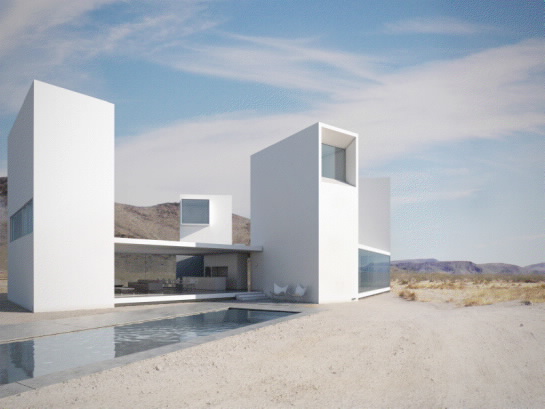
Four Eyes House; Coachella Valley, CA
Edward Ogosta Architecture
Four "sleeping towers" orchestrate four spatiotemporal viewing experiences: morning sunrise (east), mountain range (south), evening city lights (west), and nighttime stars (zenith). Each tower contains a compact top-floor bedroom, sized only for the bed, and each with a unique viewing-aperture. Ground-floor common spaces form a loose connective field between the discrete tower volumes, and offer a more permeable relationship to the landscape. The sensations of sleeping and waking are thus inflected by the building's foregrounding of intensified onsite experiential events.
About The American Institute of Architects
Founded in 1857, members of the American Institute of Architects consistently work to create more valuable, healthy, secure, and sustainable buildings, neighborhoods, and communities. Through nearly 300 state and local chapters, the AIA advocates for public policies that promote economic vitality and public well being. Members adhere to a code of ethics and conduct to ensure the highest professional standards. The AIA provides members with tools and resources to assist them in their careers and business as well as engaging civic and government leaders, and the public to find solutions to pressing issues facing our communities, institutions, nation and world. Visit www.aia.org.
Related Stories
Museums | Aug 11, 2010
Design guidelines for museums, archives, and art storage facilities
This column diagnoses the three most common moisture challenges with museums, archives, and art storage facilities and provides design guidance on how to avoid them.
| Aug 11, 2010
Broadway-style theater headed to Kentucky
One of Kentucky's largest performing arts venues should open in 2011—that's when construction is expected to wrap up on Eastern Kentucky University's Business & Technology Center for Performing Arts. The 93,000-sf Broadway-caliber theater will seat 2,000 audience members and have a 60×24-foot stage proscenium and a fly loft.
| Aug 11, 2010
Citizenship building in Texas targets LEED Silver
The Department of Homeland Security's new U.S. Citizenship and Immigration Services facility in Irving, Texas, was designed by 4240 Architecture and developed by JDL Castle Corporation. The focal point of the two-story, 56,000-sf building is the double-height, glass-walled Ceremony Room where new citizens take the oath.
| Aug 11, 2010
Carpenters' union helping build its own headquarters
The New England Regional Council of Carpenters headquarters in Dorchester, Mass., is taking shape within a 1940s industrial building. The Building Team of ADD Inc., RDK Engineers, Suffolk Construction, and the carpenters' Joint Apprenticeship Training Committee, is giving the old facility a modern makeover by converting the existing two-story structure into a three-story, 75,000-sf, LEED-certif...
| Aug 11, 2010
Utah research facility reflects Native American architecture
A $130 million research facility is being built at University of Utah's Salt Lake City campus. The James L. Sorenson Molecular Biotechnology Building—a USTAR Innovation Center—is being designed by the Atlanta office of Lord Aeck & Sargent, in association with Salt-Lake City-based Architectural Nexus.
| Aug 11, 2010
San Bernardino health center doubles in size
Temecula, Calif.-based EDGE was awarded the contract for California State University San Bernardino's health center renovation and expansion. The two-phase, $4 million project was designed by RSK Associates, San Francisco, and includes an 11,000-sf, tilt-up concrete expansion—which doubles the size of the facility—and site and infrastructure work.
| Aug 11, 2010
Goettsch Partners wins design competition for Soochow Securities HQ in China
Chicago-based Goettsch Partners has been selected to design the Soochow Securities Headquarters, the new office and stock exchange building for Soochow Securities Co. Ltd. The 21-story, 441,300-sf project includes 344,400 sf of office space, an 86,100-sf stock exchange, classrooms, and underground parking.
| Aug 11, 2010
New hospital expands Idaho healthcare options
Ascension Group Architects, Arlington, Texas, is designing a $150 million replacement hospital for Portneuf Medical Center in Pocatello, Idaho. An existing facility will be renovated as part of the project. The new six-story, 320-000-sf complex will house 187 beds, along with an intensive care unit, a cardiovascular care unit, pediatrics, psychiatry, surgical suites, rehabilitation clinic, and ...
| Aug 11, 2010
Colonnade fixes setback problem in Brooklyn condo project
The New York firm Scarano Architects was brought in by the developers of Olive Park condominiums in the Williamsburg section of Brooklyn to bring the facility up to code after frame out was completed. The architects designed colonnades along the building's perimeter to create the 15-foot setback required by the New York City Planning Commission.


